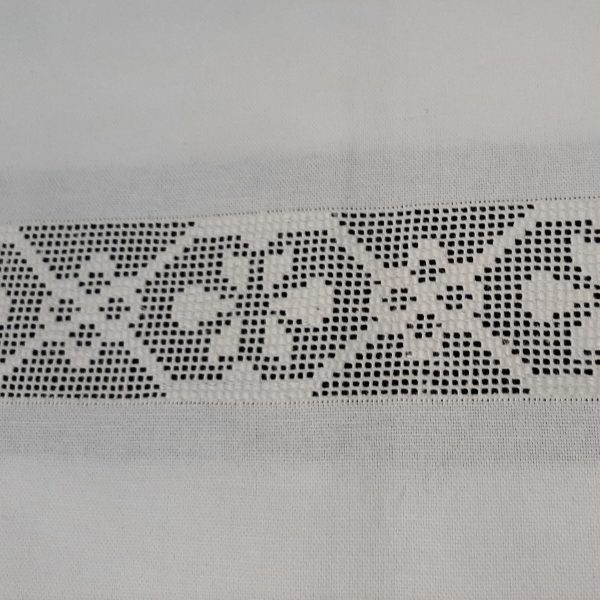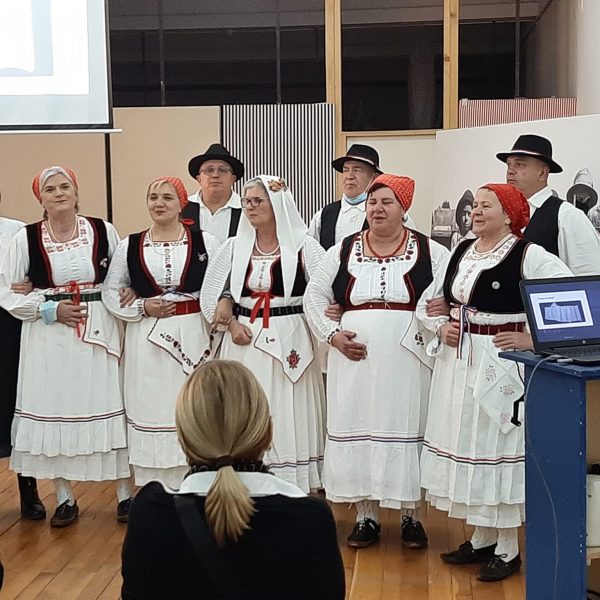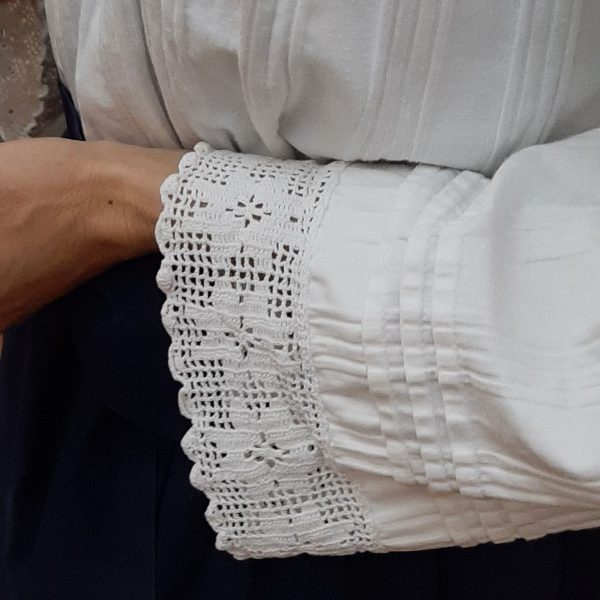Traditional embroidery creates a window into our past. We can feel, not just see, the skilled work of our elders, kept alive today.
Heritage is like a prism that, every once in a while, enables me to get in touch with the things most beautiful to me. A flicker in the soul, primordial, unadulterated joy and pride due to the fact that with every small piece of our heritage we have preserved our right to personality and uniqueness, and reminded ourselves and others of who we are in a world that tries in many ways to reduce us to the same common denominator.
I saw that joy again, pouring into my heart from the faces of dear guests who arrived from Banovina to the Zagreb Ethnographic Museum. Proud and joyful heritage guardians from the villages of Čuntić Parish near Petrinja came to Zagreb to exhibit their precious ‘piece of heritage’ and warm a cold Zagreb evening with their song. Hrvatski Čuntić, Prnjavor Čuntićki, Dragotinci and Kraljevčani are small villages that have suffered a lot, but also persevered, preserving their heritage identity in exceptional embroidery.
Warm hearts and skilful hands from Hrvatski Čuntić would not let the needle stop, to forget the movements practiced for centuries, to let the white embroidery be replaced with similar crocheted lace. They have preserved the ‘pukan’ca’, a white embroidery on the trousers of men’s folk costume worn in the villages of the Čuntić Parish, which is made up of rich ornaments and woven with very complex embroidery skills. All these efforts were crowned by the inscription of the Art of Making Pukan’ca Embroidery in the Register of Cultural Heritage of the Republic of Croatia, which will certainly contribute to its long and happy life.
I studied this white embroidery, thus named because it is made of white thread on white fabric, and I imagined the dear landscape of Banovina under the pure, sacred whiteness of the snow upon which the feet of its inhabitants create ornaments and signposts for all who come after them. Although there are a lot of white embroideries, each one is special in its own way, because with each movement of the needle, everything that has passed is connected and becomes a part of what is now.
I watched the proud, joyful faces who came from their villages located on the slopes of Zrinska Gora to show what makes them special, and what they selflessly want to share with all those who can find hope and faith in the world of harmonious diversity in the ornaments of white embroidery.
It is so important that we try our best to preserve our heritage for future generations. I hope everyone may feel the warm glow of their cultural heritage as I did.
Silvija Jacić is a heritage PR & promotion specialist from Zagreb, Croatia. She is also an independent consultant to the Banovina Heritage Interpretation Centre (www.iccb.hr). Silvija can be contacted at: silvija.jacic@promoandpress.com.
To cite this article: Jacić, Silvija (2022) ‘Why do I love heritage?’ in Interpret Europe Newsletter 1-2022, pg.13
Available online:https://interpret-europe.net/wp-content/uploads/2022/04/PDF-Newsletter-2022_1-spring_draft-5.pdf






